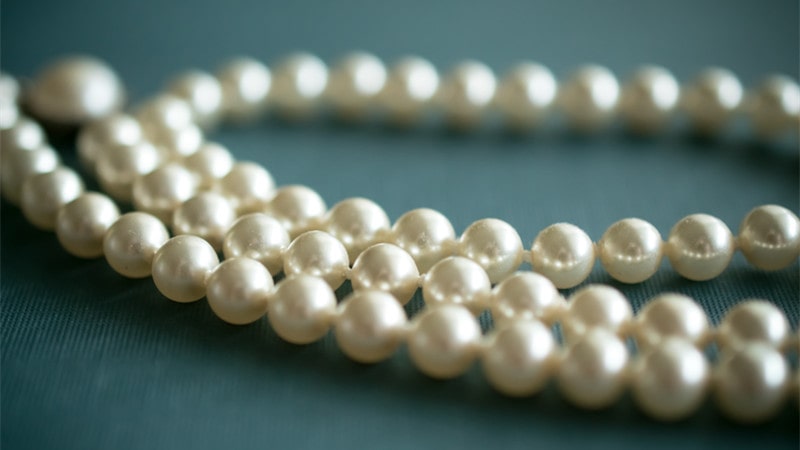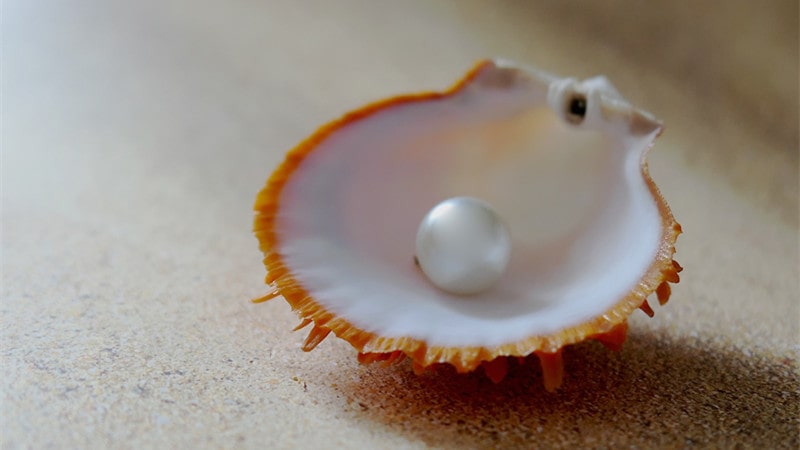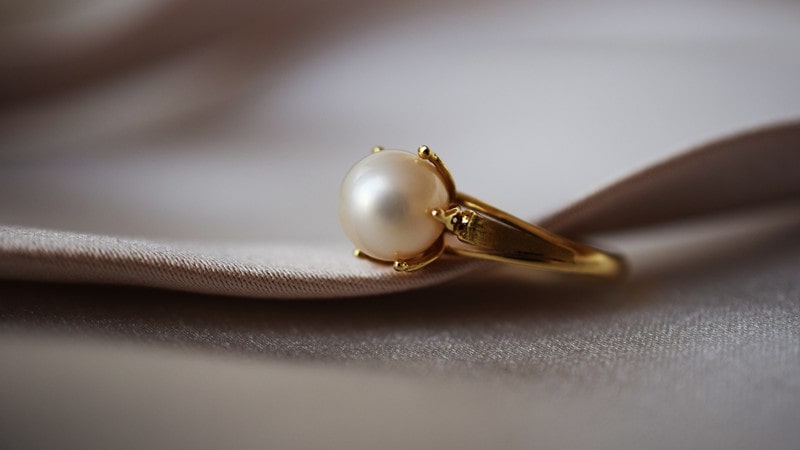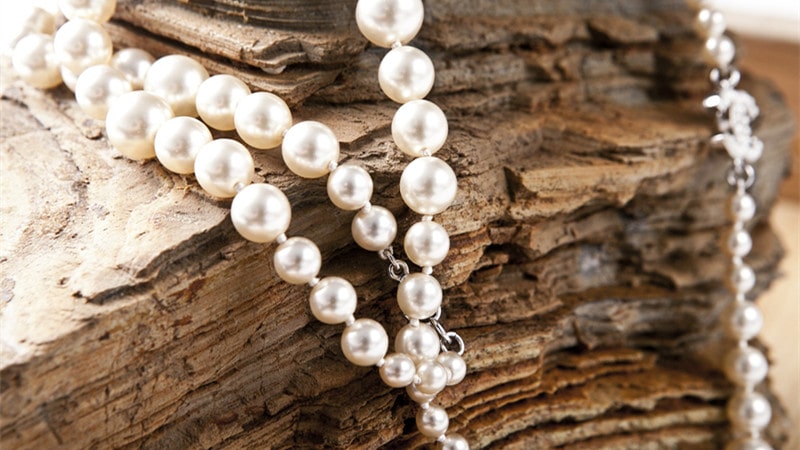Suitable for all occasions, pearls are an elegant gemstone that every woman treasures having in her jewelry box. It is highly versatile and complements other jewelry beautifully as well.
They’ve been a popular feature in jewelry for a long time. But not many of us are aware of how pearls are formed or how they are valued. If you’ve also been wondering about the biological process that results in one of the sea’s most precious stones, here’s a quick overview of how are pearls formed.
How Are Pearls Formed?

It is a common belief that a pearl is formed when a grain of sand intrudes an oyster’s shell. That, however, is not true.
Pearls are created when certain irritants like some wayward food particles get trapped inside the mollusk. When this happens, the mollusk senses this irritant and proceeds to coat this food particle with layers of aragonite and conchiolin. These two materials are the same elements that form the shells of the mollusks.
For commercially-cultured pearls, the irritant is manually placed inside the mollusk to trigger the production of these elements, in turn triggering the production of the composite material nacre, also called the mother of pearl. Nacre is responsible for the high luster that we see on pearls.
Factors Influencing Pearl Formation

Several environmental factors impact the formation of pearls, but there are two major factors that seem to have the most significant influence on this natural process.
1. Water Temperature
Higher temperatures result in higher pearl deposition as well as shell deposition, while cooler water temperatures result in thinner nacre but higher luster. Cold water also produces pearls with lesser flaws.
However, the pearls formed in higher water temperatures are also noticeably bigger.
2. Shell Location
Whether the mollusk was moved or not during the pearl development and if other factors have interrupted the process are also significant to pearl formation.
Unlikely interruptions can cause imperfections to an otherwise stagnant and resting mollusk.
How Long Does It Take For A Pearl To Form?

The ideal timeline for producing a pearl can vary from six months to a few years.
Moreover, a mollusk can only start naturally making pearls with or without any human intervention once it reaches its maturity. So, the mollusk must reach three years of age before it can produce a pearl.
After this, it will take another two to four years for the produced pearl to develop into an optimum thickness and size.
More importantly, every mollusk can only make three pearls in its entire lifetime.
How Rare Is It to Find a Pearl in An Oyster?

Natural pearls from an oyster are rare today. With a ratio of 1 in 10,000 wild oysters producing a pearl, the chances of finding a naturally occurring pearl in an oyster are near impossible.
And if you do find one, it may not even be the color, size, or shape that most jewelers would look for.
Are Pearls Formed Under Pressure?

No.
Most precious stones are formed in the bowels of the Earth due to the heat and pressure that naturally comes from the planet.
Yet, one of the most popular biological gems comes not from the Earth’s pressure but simply from the innards of a mollusk.
Under the sea, with all the irritants contributing to its birth, a pearl is formed.
What Are the 6 Factors That Determine a Pearls Worth?

Pearls are expensive. They are rare finds and can make fine investments. But not all pearls are created equal. So, the price tags are not the same either because every pearl is one of a kind.
Here are six of the factors that dictate the worth of a pearl.
#1. How And Where the Pearl Was Produced
Natural pearls are the most expensive, and since they are so rare, their worth can double or triple based on the demand.
Most pearls that are “readily” available are not as precious as the naturally produced ones and are commonly formed with human intervention. This process is popularly referred to as harvesting or pearl cultivation.
Additionally, saltwater pearls are also considered more valuable than their freshwater counterparts.
#2. Quality Of the Nacre
This is the major deciding factor in assessing the pearl’s overall market value.
The thickness of the nacre indicates the amount of nacre that embraces the pearl’s nucleus. Pearls with thicker nacres can be sold at a higher price as the nacre directly indicates how the pearl was naturally produced.
The mollusk naturally adds every nacre layer, and this process takes years to complete.
Older pearls usually have thicker nacres, which makes them more valuable. And it takes years of experience and a keen eye for detail to evaluate the thickness of the nacre.
Usually, pearls that have more luster and are heavier indicate that it has more layers of nacre on them.
#3. Shape Of the Pearl
The rounder the pearl the better. The shape of the pearl also influences the price tag because the most valuable ones are those that are almost perfectly round in shape.
However, there are also pearls that are appraised based on their organic shape. And if this is the case, then baroque pearls are on the frontlines when it comes to value.
#4. The Smoothness of The Pearl’s Surface

Pearl enthusiasts and shoppers often scrutinize the surface and texture of the pearl and look for the slightest signs of imperfection, bumps, and marks.
Sometimes, these “flaws” add to the value of the pearl, bumping its worth much higher because of its unique appearance. And this market principle is only applicable if you are looking for a single pearl.
Pearls bought in strands can’t afford to have any of these imperfections as it can lower the package’s overall value.
#5. Size Of the Pearl
A variance in millimeters can make a lot of difference to a pearl’s worth. One single millimeter can be hundreds to thousands of dollars. So, the bigger the pearl is, the higher its value becomes.
#6. Color Of the Pearl
The pearls most sought after are off-white or cream-colored ones. But there are plenty of hues available, from the shades of white to silver, rose, and champagne. There are even green pearls, whereas the Tahitian pearls are known for their natural black color.
Natural pearls, whichever shade they come in, have a higher value than artificially treated pearls. This is one of the factors methodically assessed by natural pearl collectors.



